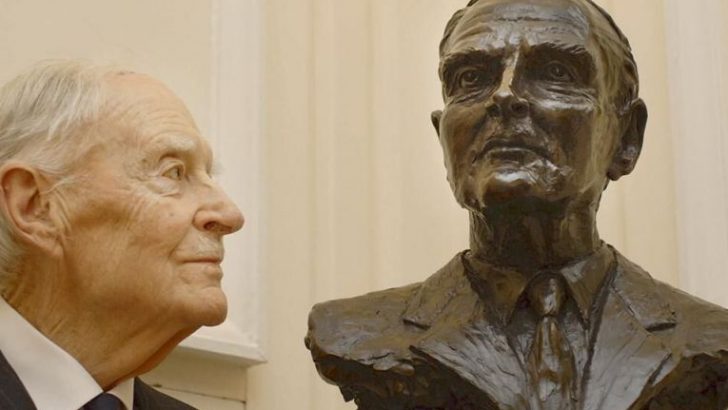Saving the State: Fine Gael from Collins to Varadkar
by Stephen Collins and Ciara Meehan (Gill Books, €24.99/£22.50)
Representatives of CumannnanGaedheal, the National Guard and the National Centre Party established Fine Gael on September 2, 1933. Eoin O’Duffy, leader of the National Guard – also known as the Blueshirts because of the apparel of its members – was the first president of the party. He was replaced as leader by W.T. Cosgrave in 1935.
The roots of every living organism are its most important element, a fact also true of institutions such as Fine Gael. This is recognised by the authors and they provide excellent early chapters on the mixed antecedents of the party. Initially it was named the United Ireland Party – Fine Gael but within months it became known simply as Fine Gael.
The book’s title claims that Fine Gael has played a crucial role in ensuring the survival of the State. The party has earned that plaudit. Like its predecessor, CumannnaGaedheal, it has never wavered from its commitment to the country’s democratic institutions. This aspect of the party’s core belief has rightly been described as the ‘Cosgrave legacy’. No other leader of Fine Gael has defended the State with more courage and determination than W.T. Cosgrave and his son Liam.
On December 6, 1922 on the establishment of the Free State, W.T. Cosgrave became president of the executive council. He and his colleagues pursued military and political victory with determination and ruthlessness over opponents that threatened the existence of the new State and chaos. In the years following the Civil War his government restored law and order, established the political process and restored and developed the country’s infrastructure. They also were successful in having the new State recognised internationally, when it became a member of the League of Nations in 1923. In the general election of 1932 to Cosgrave’s disappointment, Fianna Fáil gained a sufficient number of seats to form a government with the Labour party. But he showed his absolute commitment to the democratic process by the exemplary manner in which he conducted the transition of power to the new government.
The authors provide a detailed account of the highs and lows of those administrations as they steered the ship of State through very rough waters”
The authors narrate the history of Fine Gael through the lens of its leaders. To date five did not succeed in forming and heading a government: Eoin O’Duffy (1933-34), Richard Mulcahy (1944-59), James Dillon (1959-65), Alan Dukes (1987-90), and Michael Noonan (2001-2). Six succeeded in this regard: Liam Cosgrave (1965-77), Garrett FitzGerald (1977-87), John Bruton (1990-2001), Enda Kenny (2002-17) and Leo Varadkar (2017-20).
Liam Cosgrave served as leader of the opposition and head of the government during times almost as dangerous and tumultuous as those experienced by his father. But both in government and in opposition he did not refrain from ensuring that Fine Gael remained a bulwark to law and order and the democratic process taking a hard line against the IRA and facing down many challenging situations. When in opposition in 1970 he informed the Taoiseach, Jack Lynch, of plans to illegally import arms, destined for the North, into the country and forced him to act immediately and with effect against the conspirators, lest the incipient conflict between the Provisional IRA and the armed forces spill into the Republic.
In 1948 when Fine Gael had an opportunity to form a government Richard Mulcahy was leader. But he had been officer-commanding of the pro-treaty forces during the Civil War, hence with memories of it still fresh, the other parties to a proposed inter-party government refused to have him as Taoiseach. Thus John A. Costello, a distinguished lawyer, was summoned from the backbenches and as the authors note, expertly managed two inter-party governments; from 1948 to 1951 and from 1954 to 1957.
Garrett FitzGerald also headed two coalition administrations: 1981-82 and 1982-87. The authors write engagingly and with obvious enthusiasm about his social-reform campaign in the party and in the country at large. They rightly emphasise that before he left office he had made a significant beginning to the peace process.
John Bruton headed another coalition government from 1994 to 1997. His efforts to reform and make more equitable the taxation system is not overlooked in this account of Fine Gael.
Enda Kenny led a Fine Gael coalition government from 2011 to 2017. Leo Varadkar who succeeded as leader headed another Fine Gael coalition government from 2017 to 2020. The authors provide a detailed account of the highs and lows of those administrations as they steered the ship of State through very rough waters.
Then, prompted by their joint determination to prevent Sinn Féin from participating in Government, Fine Gael and Fianna Fail combined to form a government with the Green Party in 2020. And, on a happy note, the authors conclude that this combination was generally welcomed as it signalled an end to animosities which had lingered on since the Civil War.


 Liam Cosgrave at unveling of broze
bust of him in his years of power
Liam Cosgrave at unveling of broze
bust of him in his years of power 